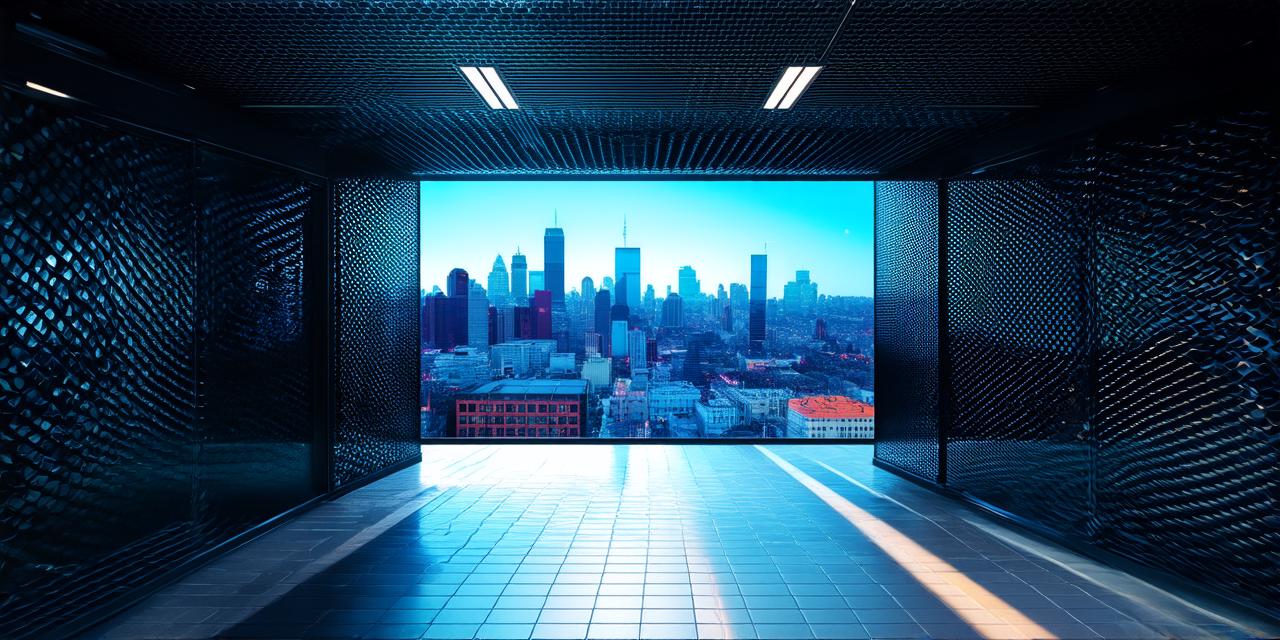Augmented reality (AR) is transforming the way we interact with the digital world by overlaying virtual objects onto the real world. One of the essential components of AR systems is the mesh, which represents the 3D model of the virtual object.
Understanding the Mesh in Augmented Reality

The mesh is a 3D representation of the virtual object in AR. It contains information about the shape, texture, and color of the object, as well as its position and orientation in space. The mesh is typically generated using 3D modeling software and exported as a file format that can be read by the AR system.
The performance of the mesh in AR depends on several factors, including the complexity of the object, the size of the mesh, and the hardware used to render it. A more complex object with many polygons will require more processing power to render, which can result in slower performance or lower frame rates. Similarly, a larger mesh will require more memory and processing power to display, which can also impact performance.
Case Study: IKEA Place
IKEA Place is an AR app that allows users to visualize IKEA furniture in their homes before making a purchase. The app uses a combination of computer vision and 3D modeling to create realistic representations of the furniture, which are then overlaid onto the real world using AR technology.
The performance of the mesh in IKEA Place is crucial to the success of the app. The app must be able to render the mesh in real-time while also tracking the user’s movements and allowing them to interact with the virtual objects. To achieve this, IKEA Place uses a combination of optimized 3D models and advanced rendering techniques, which allow the app to run smoothly even on older devices.
Personal Experience: AR Game Development
As an AR game developer, I have firsthand experience with the challenges of optimizing mesh performance in AR systems. One of the key factors that can impact performance is the size and complexity of the mesh. In my experience, smaller, simpler meshes tend to perform better than larger, more complex ones.
Another important consideration is the hardware used to render the mesh.
AR systems require significant processing power to overlay virtual objects onto the real world, so it’s essential to choose hardware that can handle the load. For example, using a high-end smartphone or tablet with a powerful processor and graphics card can help improve performance and reduce lag.
Factors Affecting Mesh Performance in AR
There are several factors that can impact the performance of mesh in AR systems, including:
- Hardware: As mentioned earlier, the hardware used to render the mesh can greatly affect its performance. High-end smartphones and tablets with powerful processors and graphics cards can help improve performance and reduce lag. However, lower-end devices may struggle to handle more complex meshes or require optimizations to run smoothly.
- Mesh Complexity: The complexity of the mesh, including the number of polygons and the level of detail, can impact its performance in AR systems. More complex meshes will require more processing power to render, which can result in slower frame rates or lower performance.
- Mesh Size: The size of the mesh can also impact its performance in AR systems. Larger meshes will require more memory and processing power to display, which can also impact performance.
- Lighting and Shadows: Lighting and shadows can also affect the performance of mesh in AR systems. Realistic lighting effects can make virtual objects appear more realistic, but they can also require more processing power to render. Similarly, adding shadows to virtual objects can add depth and realism, but it can also increase the complexity of the mesh and impact performance.
